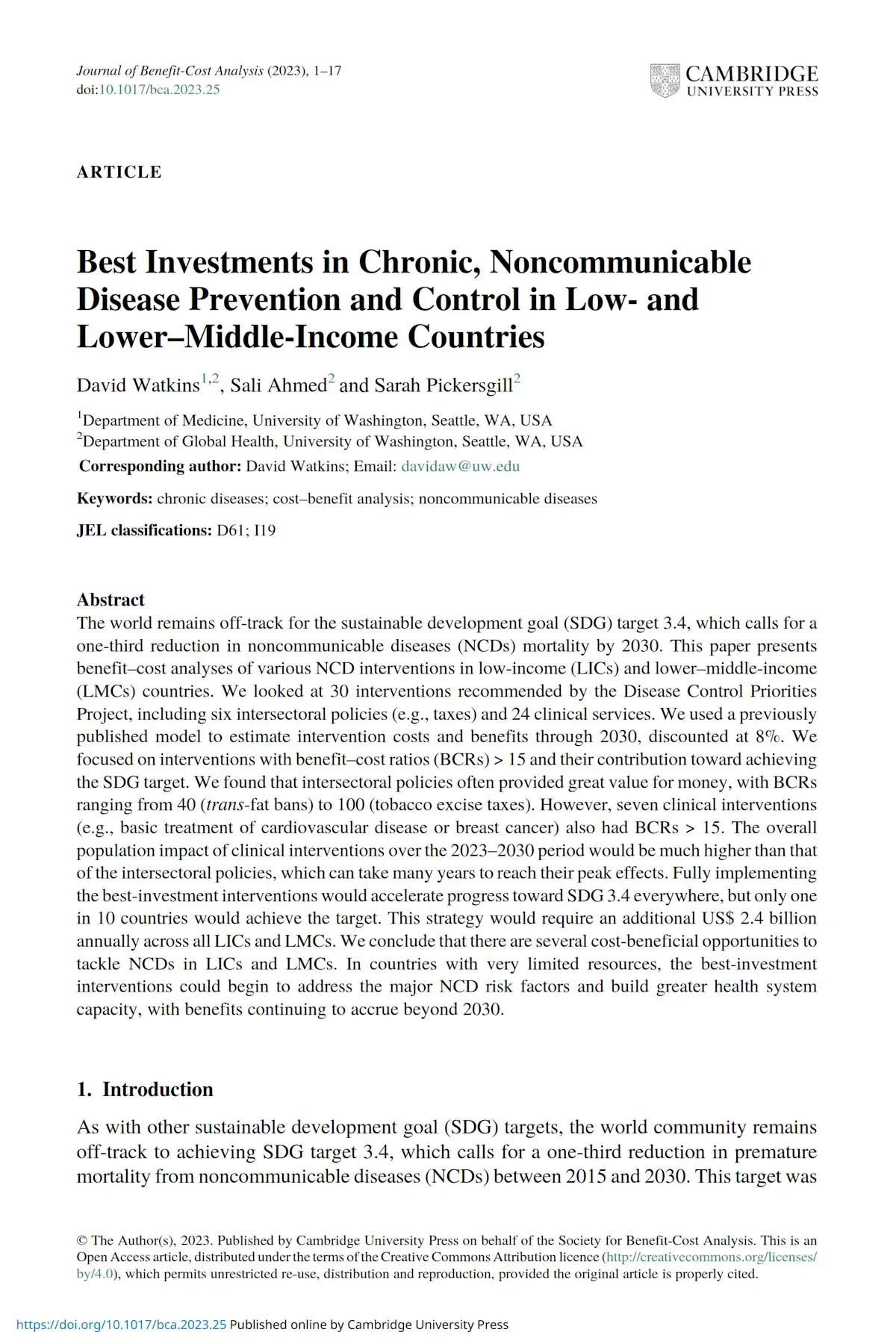Halftime for SDGs: Chronic diseases
Best Investment Paper
The world remains off-track for the Sustainable Development Goal (SDG) target 3.4, which calls for a one-third reduction in noncommunicable disease (NCDs) mortality by 2030. This paper presents benefit-cost analyses of various NCD interventions in low-income (LICs) and lower–middle-income (LMCs) countries.
We looked at 30 interventions recommended by the Disease Control Priorities Project, including six intersectoral policies (e.g., taxes) and 24 clinical services. We used a previously published model to estimate intervention costs and benefits through 2030, discounted at 8%. We focused on interventions with benefit-cost ratios [BCRs] >15 and their contribution towards achieving the SDG target.
We found that intersectoral policies often provided great value for money, with BCRs ranging from 40 (trans-fat bans) to 100 (tobacco excise taxes). However, seven clinical interventions (e.g., basic treatment of cardiovascular disease or breast cancer) also had BCRs >15. The overall population impact of clinical interventions over the 2023–2030 period would be much higher than that of the intersectoral policies, which can take many years to reach their peak effects. Fully implementing the best-investment interventions would accelerate progress towards SDG 3.4 everywhere, but only one in ten countries would achieve the target. This strategy would require an additional US$ 2.4 billion annually across all LICs and LMCs.
We conclude that there are several cost-beneficial opportunities to tackle NCDs in LICs and LMCs. In countries with very limited resources, the best-investment interventions could begin to address the major NCD risk factors and build greater health system capacity, with benefits continuing to accrue beyond 2030.
The final peer-reviewed published article can be found here:


